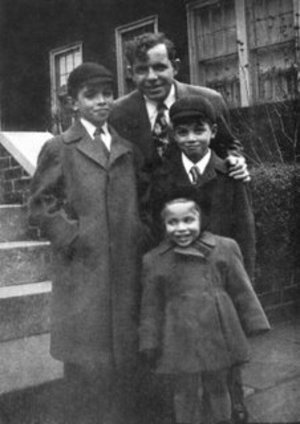Michael Nolan returns with this installment of his Brooklyn memoir.
For me it was Miss Melsha, my 4th grade teacher at PS 99 who taught me
my enduring love of trees and maps. Out the window from our classroom,
on the other side of the schoolyard fence, stood a row of stately
Lombardy Poplars. Poplar’s Latin name is "Alamo" from which we derive
the place names of Los Alamos or Alameda, a grove of poplar trees.
Credit here to Mr. Humbert, my French-Canadian Latin teacher at Midwood
High School from whom ("preposition takes the objective case") I
learned English grammar, etymology, plus a passion for palindromes,
crossword puzzles, Anagrams, Scrabble, and writing.
In Miss
Melsha’s class, we made spatter-prints of leaves collected on field
trips in the neighborhood: a leaf pinned down on construction paper, a
bottomless cigar box with screen mesh placed on top, green India ink
spattered across the screen with a toothbrush, then lift the box and
the leaf, and voila a lovely outline of the leaf.
In front of my
house was a Norway Maple which I could climb by age 10. We made
"pug-noses" from the winged seeds. Mother Nature pre-scored an easy
break point containing the sticky white glue to attach the decorative
up-turned wing on your nose. Across the street was a tall Sycamore,
identified by its broad leaf, chipped bark, and "itchy ball" seeds,
which we would mischievously drop down the backs of our buddies. These
were tree applications not taught by Miss Melsha but learned through
the inherited folklore of East 10th Street.
In geography
homework, I remember diligently drawing (not tracing) the Hawaiian
Islands by hand while looking at an Atlas. I suppose I could have
chosen Wyoming, but savored a challenge. I spent hours drawing the
boroughs of New York City until I figured out how the index finger of
northern Manhattan fit under The Bronx at Spuyten Duyvel. What a fine
feeling of accomplishment. I marked the location of the Polo Grounds at
Coogan’s Bluff on the Harlem River where my beloved Willie Mays played
centerfield for the New York Giants.
Two days ago, I was in my
backyard digging up the remaining bulbous root of a dying black cherry
tree (Prunus serotina) as my booming pine (Pinus ponderosa) claimed
unrivaled prominence in the garden. Thank you, Miss Melsha. "Ave" Mr.
Humbert!


